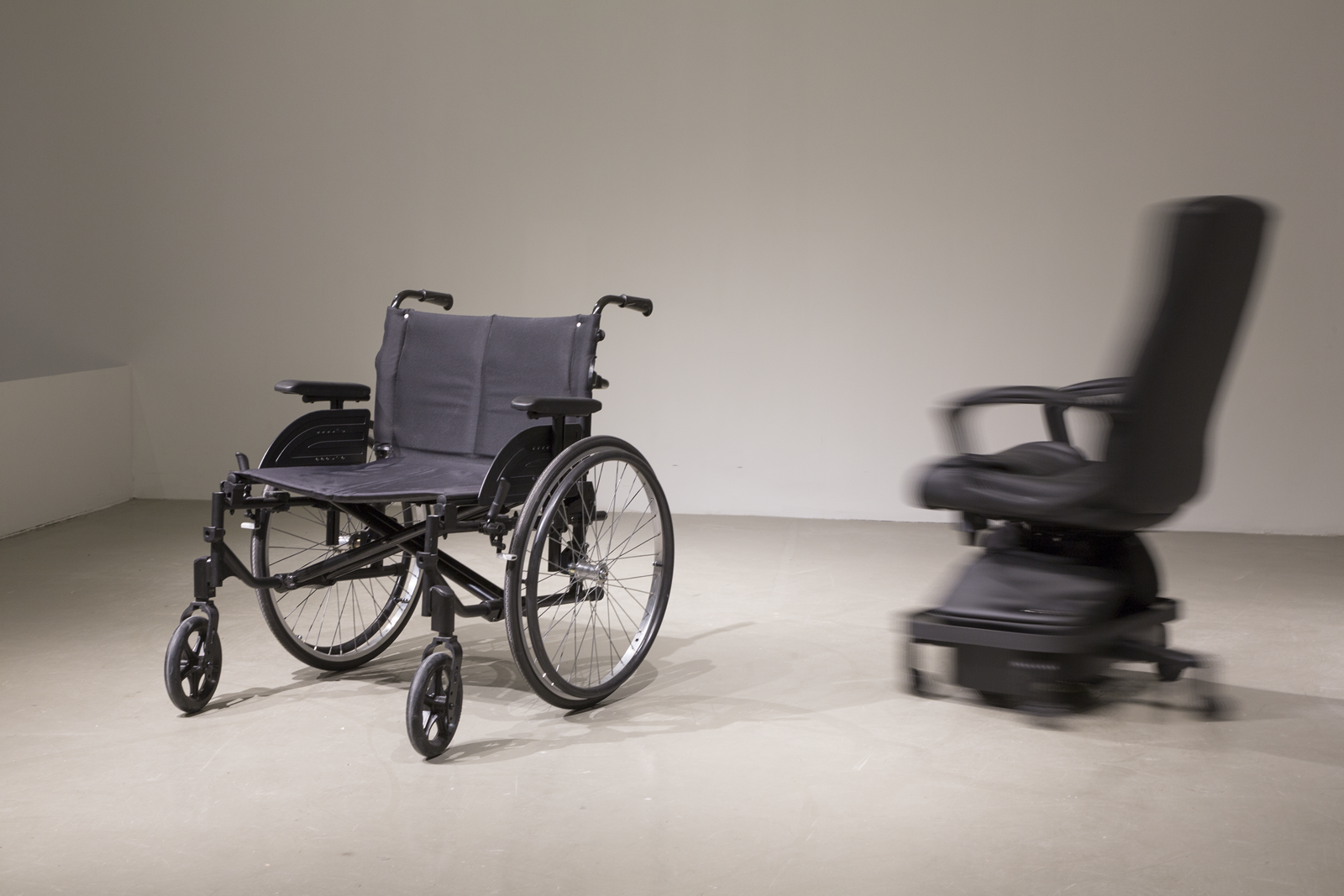19.04.2022
Behavioral Objects, Agonistic Objects How and why to design art robotic objects fighting against and for their being conditions?

Behavioral Objects, Agonistic Objects
How and why to design art robotic objects fighting against and for their being conditions?
Created in an artistic context that also belongs to the wider field of robotics, “behavioral objects” are defined by their capacity to express a “personality” thanks to the quality of their movements and their actions and reactions, which are, in this case, regarded as “behaviors.” Non-figurative, these art objects have no need of being useful – their activity does not have a specific function or usage – and they have built-in energy sources that are, generally, not visible, making it impossible to attribute to a third party the energy directly required to make them move, the physical cause of their activity.
If their expressive capacities can be provided through the ability to move and interact dynamically with the environment, what kind of interaction could we design to stimulate the attribution of behaviors and even personality? How to build an emotional and reflective relation with this robotics object through an aesthetic dimension in operation?
Based on the presentation of several art projects developed in the framework of our Behavioral Objects research and creation project, we propose to consider the design of this objects through an agonistic approach. Even in operation, these objects are still in construction: in a kind of new homeostatic perspective, they are always seeking for their balance. They need to fight for that, against and for their being conditions. Exhibited such objects it is to exhibit this fight. It requires now to configure relations of forces, internal as with the environment. This new kind of settings as to consider aesthetic, symbolic and technical dimensions gathered in real-time operation. It raises the possibility of an agonistic design, a way to set conditions for a sensitive and reflective experience for objects and humans.
Image credit :
Disabled Chair, 2014 – 2019, prototype #3, Samuel Bianchini with the collaboration of Didier Bouchon
“Invisible Man” Exhibition, curating by Murray Horne, Wood Street Galleries, Pittsburgh, April 2019. Photo: © Samuel Bianchini – ADAGP
An artwork developed and prototyped as part of the research project “Behavioral Objects” of the Reflective Interaction Group of EnsadLab (laboratory of The École nationale supérieure des Arts Décoratifs – PSL University).